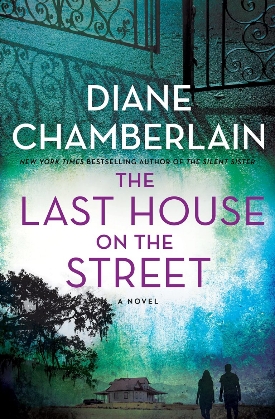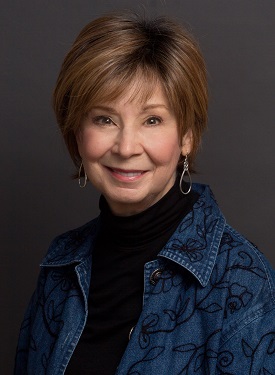 Synopsis:
Synopsis:
A community’s past sins rise to the surface when two women, a generation apart, find themselves bound by tragedy and an unsolved, decades-old mystery.
1965
Growing up in the well-to-do town of Round Hill, North Carolina, Ellie Hockley was raised to be a proper Southern lady. Enrolled in college, studying pharmacology, she’s all but engaged to a bank manager, Reed. Ellie isn’t as committed to her expected future as her family believes. President Lyndon Baines Johnson is expected to sign the Voting Rights Act any day, and she’s chosen to spend her summer break as a volunteer helping register black voters.
As Ellie follows her ideals, fighting for the civil rights of the marginalized, her scandalized parents scorn her efforts. Her friends and neighbors reveal their prejudices.
And when she loses her heart to a fellow volunteer, Ellie discovers the frightening true nature of the people living in Round Hill.
2010
Architect Kayla Carter and her husband designed a beautiful house for themselves in Round Hill’s new development, Shadow Ridge Estates. It was supposed to be the dream home in which they would raise their three-year-old daughter and grow old together.
Instead, it’s the place Kayla’s husband died in an accident — a fact known to a mysterious woman who appears unannounced in Kayla’s office. “Ann Smith” warns Kayla against moving in, adding that she is thinking about killing someone.
The woods and lake behind the property have long been reputed to be haunted and the new home has been targeted by vandals. Kayla’s neighbor, Ellie Hockley, has just returned after a forty-five year absence to care for her elderly mother and ailing brother. Ellie harbors secrets about the dark history of the land on which Kayla’s new house stands.
Two women. Two stories. Both on a collision course with the truth . . . no matter what that truth may bring to light.
Review:

Bestselling author Diane Chamberlain says that the stories she tells “are often filled with twists and surprises and –- I hope -– they also tug at the emotions.” Her settings vary from historical to contemporary, frequently include suspense, and she even ventured into science fiction with The Dream Daughter in which time travel was an intrinsic part of the tale. But all of her books have one thing in common. They “focus on relationships — between men and women, parents and children, sisters and brothers, friends and enemies.” Not surprisingly, considering her education and professional background, Chamberlain “can’t think of anything more fascinating than the way people struggle with life’s trials and tribulations, both together and alone.”
With The Last House on the Street, she takes readers back to North Carolina, her “true home,” where she has set several of her novels, including Big Lies in a Small Town. When Chamberlain was fourteen years old, she awoke one morning to the news that three young civil rights workers, two white and one African-American, had been brutally murdered in Mississippi. “It was the first time their work had an emotional and intellectual impact on me,” she relates. At the time, Chamberlain was attending an integrated junior high school in New Jersey and the crime “opened my eyes to civil rights work, and the fact that a student could do something. A student had some power.” She was “awakening to the injustices faced by people who looked like my classmates.” She never forgot the information she happened upon about the SCOPE (Summer Community Organization and Political Education) program which served as the impetus and provided the foundation for Ellie’s story.
In The Last House on the Street, Chamberlain again employs dual first-person narratives presented in alternating chapters to relate the complex, but deftly-plotted tale. “I love doing that,” Chamberlain says. “It’s really fun for me as a writer to write two completely different storylines, and then see the twists and turns that bring those two stories together.” Chamberlain reveals she drafts the separate narratives in full before merging the two into a cohesive novel. “One of the best reasons to do it that way is to not lose [the character’s] voice. I find it really helpful to stick with one timeline and one character” before melding them. “Usually it’s kind of a little miracle that they fit together really well,” she notes. Chamberlain’s eventual merger of the two narratives in The Last House on the Street is seemingly effortless and a highly effective storytelling technique that keeps the book’s pace steady and builds readers’ interest as the story careens toward its conclusion.
In 1965, twenty-year-old Ellie Hockley has been dating Reed Miller, who is earning fast promotions at the local bank, for four years and everyone, including Reed, expects them to marry. Round Hill is a close-knit community in which the residents are all acquainted and knew each other’s business. Her parents are unaware that while serving as a reporter and photographer for the University of North Carolina’s newspaper, Ellie was assigned to cover a protest against segregated business establishments. As Ellie and her lifelong best friend, Brenda, watched the students, professors, and townspeople kneeling side by side in the street, blocking traffic, Ellie took pictures and found herself “moved by their quiet courage.” Ellie was influenced by her late Aunt Carol, a champion of civil rights who took part in the 1963 March on Washington at which Dr. Martin Luther King, Jr. spoke. “Impulsively, before I had a chance to change my mind,” Ellie relates, “I took my place at the end of the line — which was in the gutter — and got down on my knees” next to Gloria, the only black woman in her pharmacology class. Brenda watched, aghast. Ellie and the other protesters were taken into custody and later released.
Home for the summer, Ellis is expected to work in her father’s pharmacy. Listening to him read the newspaper, she learns that SCOPE will be comprised of more than five hundred volunteers canvassing seventy-five rural counties “with the aim of removing racism from American politics.” Only thirty-four percent of black voters are registered, so SCOPE participants will be trained to encourage and assist them to register. “I knew in a way I couldn’t explain even to myself . . . that I was going to be one of those white students working to register Negro voters. I knew it the way I knew my own name,” Ellie recalls.
In 2010, Kayla Carter is mourning her husband, Jackson, and steeling herself to move into the home they designed. The staircase in that home is where Jackson died tragically, leaving Kayla to raise their daughter, Rainie, alone. Kayla feels trapped. She dreads living in the house without Jackson, but doesn’t want strangers to live in it, either. The new subdivision in which it sits, Shadow Ridge Estates, is on the outskirts of Round hill. With expansive windows, it is the only house in the new development that has been completed, situated at the end of the road. Behind it are dark woods — “straight out of a Grimms’ fairy tale.” Just up the street, the old Hockley house is still occupied by Buddy Hockley, Ellie’s brother, who refuses to sell to the developer. Growing up, the Hockley kids “just about lived in those woods, climbing trees, playing hide-and-seek, and fishing in the lake.” They even had a tree house in an enormous oak tree. Kayla discovers it’s still there and, unbeknownst to her, Jackson renovated it. Kayla’s father, Reed Miller, admits that he hoped Kayla and Jackson would not build their home in the new development because, as a kid, he and his friends thought the woods were haunted. In fact, there remains a circular clearing in the woods where the local KKK used to meet in secret. Kayla is shocked when he tells her, “I knew some of those Klansmen. Back then, a lot of otherwise upstanding people in town belonged.”
Kayla also remains rattled by the unsettling visit to her office from a woman who called herself Anna Smith and appeared to be disguised. She refused to remove her sunglasses and wore a red wig. She knew about Jackson’s death, that Kayla is the mother of a young child, and the new house. Speaking in a deep, raspy voice, she told Kayla, “No one should’ve put a house there to begin with. All those new houses. They don’t belong. But especially that one. Yours.” Worse, she claimed she has been “thinking about killing someone. I’ve been thinking about it for a long, long time. Years and years and years. And now I have the chance.”
Chamberlain compellingly recounts the experiences of the two women. Ellie convinces the local minister at the A.M.E. church to let her be part of SCOPE, even though the students selected are only supposed to be Northerners. He fears that Ellie’s involvement might adversely impact the program, but her conviction wins him over. Her parents, Buddy, and Brenda are all horrified, disapproving, and worried about their own standing in the community when she announces her plans for the summer, but she will not be dissuaded. She completes the training and is partnered with Winston Madison, a young black junior at Shaw University in Raleigh who, in contrast to Ellie, is assigned to the area precisely because he is from the county and knows the people who live there.
SCOPE’s mission is fraught with dangers that Chamberlain details from Ellie’s perspective. She is well-meaning, but naive and idealistic. In various ways, as initially feared, Ellie’s presence complicates the volunteers’ efforts, despite her earnest desire to help bring about change. Ellie’s experiences serve as a poignant reminder of life in the South during the tumultuous 1960’s as the civil rights movement gained momentum in America. She is shocked to learn that North Carolina has “more Klan members that all the other states put together,” and that the Civil Rights Act of 1964 and looming enactment of the Voting Rights Act are causing them to enhance their efforts to maintain the segregated status quo.
And in 2010, Ellie and Kayla come face-to-face when Kayla sees Ellie at the Hockley house and stops to introduce herself. Kayla is mystified by Ellie’s strange reaction to the fact that Kayla is the daughter of Reed Miller, and learns that Ellie has returned to Round Hill for the first time in forty-five years. She has been living in San Francisco where she teaches yoga. Now she is back in North Carolina to care for her mother and Buddy, who is terminally ill.
As strange and disturbing events disrupt Kayla’s efforts to settle into her new residence, Chamberlain reveals how young Ellie’s life unravels as a result of her feelings, choices, and refusal to conform to the expectations of her family, friends, and Southern society.
Chamberlain’s two narratives merge as Kayla learns about Ellie and Reed’s history, as well as what actually took place in the woods that long-ago summer. Chamberlain’s story is full of her signature twists and shocking revelations. Young Ellie is endearing and sympathetic, but clearly inviting tragedy as she stubbornly refuses to see the world as it is, rather than how it should be. Chamberlain credibly illustrates how dramatically different the Ellie who returns to Round Hill is from the young woman who turned her back on her home and family forty-five years ago, although not even Ellie knows the whole truth until the story’s jaw-dropping ending. Kayla is equally empathetic. She is a young, grieving widow intent on keeping her daughter safe who finds herself at the center of a mystery she could never have anticipated. Every supporting character is believable — Chamberlain conveys the political climate through characters who seem despicable with the benefit of hindsight but, in their own estimation, are justified in taking whatever measures are necessary in order to preserve their way of life.
In The Last House on the Street, Chamberlain smartly tackles contemporary issues by relating a tale set fifty-seven years ago. The ongoing fight for voting rights is in the 2022 headlines on a daily basis, as politics figure prominently into “what should be a basic American right,” but still isn’t in far too many regions of the United States. The Last House on the Street is a powerful commentary not just about the continuing struggle for voting rights, but also on racism, social injustice, and the freedom to love whomever one chooses. It is heartbreaking and memorable as a result of Chamberlain’s restrained telling of a cleverly-plotted, riveting story — neither of her narratives lapses into a preachy or self-righteous tone. Rather, Chamberlain lets the villains in her tale self-identify through expertly-timed revelations of their reprehensible beliefs and actions.
True to Chamberlain’s style, The Last House on the Street is an exploration of relationships, particularly with respect to Ellie, who tragically comes-of-age with the knowledge that not all relationships can or should be long-lasting, even though we carry the memories of them and the lessons we learned from them with us for the rest of our lives. It is a deeply moving, unforgettable story.








1 Comment
Such a prolific author and such a good one. I just wish the kindle versions were slightly cheaper!!!